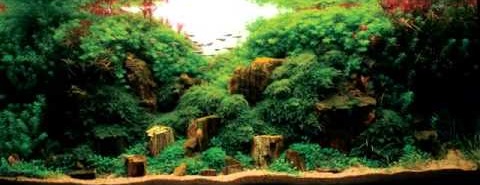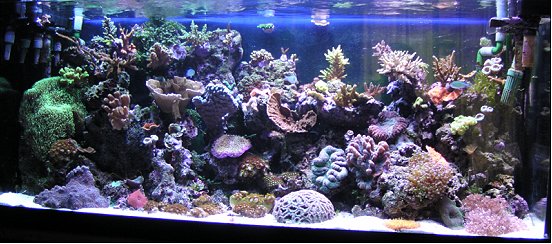Proper lighting of an aquarium is essential. It is not just another element to make it look pretty, it contributes to the normal development of the life cycles of the fish and plants that inhabit it. We are going to give you some tips on how to properly illuminate your aquarium.
How much light does my aquarium need?
As in most cases, it depends. The amount of light needed will depend mostly on the dimensions of the aquarium itself and the type of dwellers that populate it. In this case we can distinguish between those that only have fish, those that also have natural plants and those that replicate a reef with corals, fish and other fauna.
Aquarium lighting for fish only
In aquariums where we have only fish, the main function of light is to recreate the day/night cycle in the aquarium. In this way, we avoid stressing the fish either by having too little or too much light. Here the only thing to consider is the number of hours the light will remain on and, above all, avoid using lights with a color temperature below 5,500K, which promotes algae growth.
Lighting for planted aquariums
If we have a planted aquarium we have to adjust the light intensity to the “difficulty” of the plants we want to have. For the less demanding ones it is enough to have between 10-20 lumens per liter of water, those with moderate requirements need between 20 and 40 lm/l (lumens per liter), while the more advanced ones may need more than 40 lm/l. Also, we will choose a source that will emit the spectrum of light necessary for the plants to develop photosynthesis in a normal way.

Lighting for marine aquariums with corals
Reef aquariums are the most complex because corals require specific lights (actinic light) that simulate the light perceived by living beings in the photic zone of a marine ecosystem. Not to be confused with UV light that is usually used at night to highlight corals and their fluorescence.

How to calculate the lumens for an aquarium
The light requirements depend on the light needs of the plants we will have in the aquarium. In general, to calculate the amount of light that we should install, we should know the amount of sunlight in the natural habitat of the plant (usually tropical areas). To simplify the calculations we will divide the plants into three groups according to their light requirements. For example, a plant from an area with a lot of sun we will say that it has high requirements.
In the following table we can see the amount of lumens that we must provide in each case:
| Hours | Low Requirements | Moderate Requirements | High Requirements |
|---|---|---|---|
| 7h | 16-18 lm/l | 32-35 lm/l | 48-53 lm/l |
| 8h | 14-15 lm/l | 27-30 lm/l | 41-46 lm/l |
| 10h | 11-13 lm/l | 23-25 lm/l | 34-37 lm/l |
Another factor to take into account is the depth at which our plants are located. The greater the depth, the lesser the amount of light received. Here also the water clearness will have an influence, since a more murky water will absorb more light.
For the average planted aquarium, with suspended nutrients, we can use the following table:
| Height in cm | Light received |
|---|---|
| 100% | 0 |
| 90% | 10 |
| 82% | 20 |
| 74% | 30 |
| 67% | 40 |
| 61% | 50 |
| 55% | 60 |
| 50% | 70 |
| 45% | 80 |
| 41% | 90 |
| 37% | 100 |
How should I light a fish tank?
Correct placement of the light source is essential for our fish to look their best. What we must always keep in mind is that the light reflected by an object is directed to where the light hits.
Therefore, the best way to illuminate our fish tank or aquarium is from above and with the light source at the front, always avoiding lighting from below or the sides of the aquarium as it could harm the fish. In this way we get the fish to look good and their colors are brighter.
LED lighting for aquariums
LED lighting is also gaining a place in the world of aquariums, as it provides several benefits over traditional means: consumption is much lower, they emit little heat, are very durable and can be adapted to the requirements of any project no matter how simple or complex it may be.
A good option is to replace the fluorescent bulb that is usually used in watertight aquarium lights and install an LED tube. Another interesting option is to use a LED strip that will also allow us to adjust the light intensity and, depending on the model, even the color of the light.


